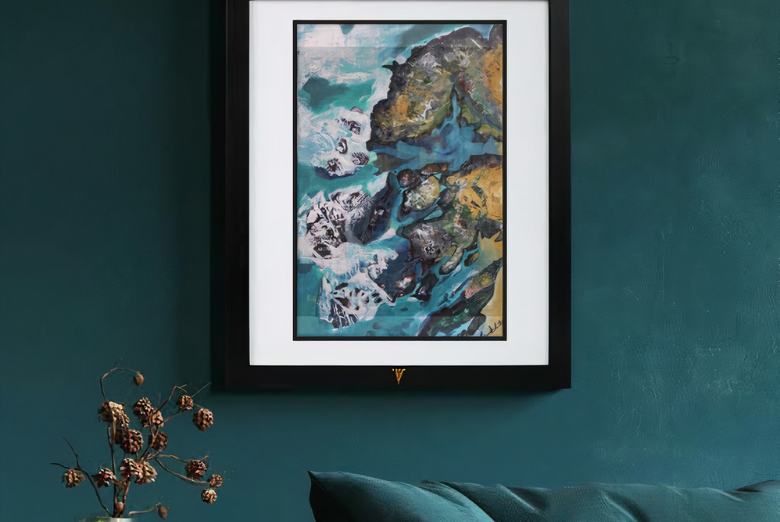Modern art, a movement that reshaped the cultural landscape, is a vibrant testimony to human creativity and innovation. This artistic revolution, spanning the late 19th to the 20th centuries, gave rise to a plethora of styles, techniques, and philosophies. Behind these groundbreaking movements were modern artists whose lives and works continue to inspire and challenge perceptions of art. Exploring the Life and Legacy of Modern Artists delves into the lives of some notable modern artists and their enduring legacies.
The Pioneers of Modern Art
The seeds of modern art were sown by pioneers who sought to break free from traditional artistic conventions. Paul Cézanne, often referred to as the “Father of Modern Art,” was instrumental in bridging the gap between Impressionism and Cubism. His works, such as The Basket of Apples and Mont Sainte-Victoire, emphasized structure and form, laying the groundwork for future artists.
Vincent van Gogh, whose tumultuous life was as vibrant as his brushstrokes, brought a raw emotional intensity to his works. Despite battling mental illness, Van Gogh produced masterpieces like Starry Night and Sunflowers, characterized by bold colors and dynamic compositions. His posthumous recognition underscores the timeless appeal of his unique vision.
The Rise of Abstract Art
The advent of abstract art marked a radical departure from representational art. Wassily Kandinsky, regarded as a pioneer of abstract art, believed that art should evoke emotions independent of visual references. His painting Composition VIII epitomizes his theory of “inner necessity,” where shapes and colors transcend the physical world.
Piet Mondrian, another abstract art luminary, embraced simplicity and harmony through his grid-based compositions. Works like Composition with Red, Blue, and Yellow reflect his quest for a universal aesthetic rooted in balance and order. Mondrian’s influence extended beyond art, inspiring design and architecture.
Surrealism: The Realm of Dreams
Surrealism emerged in the early 20th century as an exploration of the subconscious mind. Salvador Dalí, with his flamboyant personality and dreamlike imagery, became the face of this movement. His masterpiece The Persistence of Memory features melting clocks in a barren landscape, symbolizing the fluidity of time and memory.
Frida Kahlo, though often associated with Surrealism, carved a niche with her deeply personal works. Her self-portraits, such as The Two Fridas and Self-Portrait with Thorn Necklace and Hummingbird, depict her struggles with physical pain and identity. Kahlo’s art resonates as a celebration of resilience and self-expression.
The Pop Art Revolution
The mid-20th century witnessed the rise of Pop Art, a movement that celebrated and critiqued consumer culture. Andy Warhol’s iconic works, including Campbell’s Soup Cans and Marilyn Diptych, blurred the lines between art and commercialism. Warhol’s embrace of mass production techniques, like silk-screening, challenged traditional notions of originality in art.
Roy Lichtenstein, another Pop Art stalwart, drew inspiration from comic strips. His works, such as Whaam! and Drowning Girl, combine bold primary colors with Ben-Day dots, creating a graphic and accessible aesthetic. Lichtenstein’s art underscores the interplay between high and low culture.
Feminism and Modern Art
The feminist art movement of the 1970s sought to challenge gender biases and highlight women’s contributions to art. Judy Chicago’s monumental installation The Dinner Party honors significant women from history through a symbolic banquet. Each place setting features intricately designed ceramics and textiles, celebrating feminine creativity.
Barbara Kruger’s bold text-based works critique societal norms and power dynamics. Pieces like Your Body is a Battleground employ striking visuals and provocative messages to spark dialogue on feminism, consumerism, and identity.
Contemporary Legacies
Modern artists have left an indelible mark on contemporary art and culture. Their innovations in form, technique, and subject matter continue to inspire new generations of artists. For instance, the digital age has seen a resurgence of interest in abstract art, with artists using technology to create dynamic, interactive works.
Additionally, the themes explored by modern artists—identity, emotion, and societal critique—remain relevant in today’s globalized world. Artists like Yayoi Kusama, with her immersive installations, and Banksy, with his provocative street art, draw upon the legacies of their predecessors while addressing contemporary issues.
The Enduring Appeal of Modern Art
Modern art’s enduring appeal lies in its ability to challenge conventions and provoke thought. It invites viewers to see the world through diverse perspectives and embrace the complexities of human experience. By breaking boundaries, modern artists have redefined what art can be, ensuring their legacies remain vibrant and influential.
Whether through the emotional intensity of Van Gogh, the abstract harmonies of Kandinsky, or the cultural critiques of Warhol, modern artists have shaped the way we understand and appreciate art.



